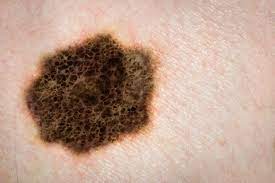The field of dermatology is continuously advancing, bringing new approaches to skin cancer treatment. As our understanding of skin cancer grows, so do the methods for managing it. These developments aim to provide more targeted and effective options for patients. The evolution in dermatology focuses on refining existing techniques and introducing novel therapies to improve outcomes.
What Advances Are Driving Treatment?
Recent technological and biological discoveries are changing the landscape of skin cancer care. Researchers are developing treatments that target cancer cells more precisely, which may help spare healthy tissue. This progress stems from a deeper knowledge of the genetic and molecular makeup of different skin cancers.
These new approaches include a variety of methods. Each one offers a different way to address skin cancer.
- Immunotherapy: This treatment works with the body’s immune system to help it find and attack cancer cells. It includes medications known as checkpoint inhibitors.
- Targeted Therapy: These drugs focus on specific molecules involved in cancer cell growth. By blocking these pathways, the therapy can slow or stop cancer progression.
- Advanced Imaging: High-resolution imaging techniques help dermatologists see skin lesions with greater detail. This can aid in earlier and more accurate detection.
These advancements represent a shift toward more personalized treatment plans. Doctors can now choose therapies based on the specific characteristics of a patient’s cancer. This tailored approach is a key part of modern dermatology.
Are Minimally Invasive Options Growing?
There is a growing trend toward using minimally invasive procedures for certain types of skin cancer. These techniques are designed to remove cancerous tissue with less impact on the surrounding skin. This often results in smaller incisions, reduced scarring, and quicker recovery times for patients.
Mohs surgery is a well-established minimally invasive procedure. A surgeon removes skin cancer layer by layer, examining each one under a microscope until no cancer cells remain. Other options include topical creams that stimulate an immune response or destroy cancer cells directly on the skin’s surface. Photodynamic therapy uses a special light and a photosensitizing agent to target and eliminate abnormal cells.
The choice of procedure depends on several factors. These include the type of skin cancer, its location, and its size. A dermatology professional can explain which options are suitable for an individual’s specific situation. The expansion of these less invasive methods provides more choices for patients.
What Are Prevention Strategies?
Protecting your skin from harmful UV radiation is one of the most significant ways to reduce the risk of skin cancer. Prevention in dermatology focuses on building consistent habits and staying aware of sun exposure. Here are some simple yet effective steps you can take:
- Use sunscreen daily: Choose a broad-spectrum sunscreen with high SPF to shield your skin from both UVA and UVB rays. Reapply every two hours when outdoors.
- Wear protective clothing: Long-sleeved shirts, wide-brimmed hats, and sunglasses provide a physical barrier against the sun.
- Seek shade during peak hours: Limit direct sun exposure between 10 a.m. and 4 p.m., when UV rays are strongest.
- Perform regular skin self-exams: Check your moles and spots monthly to be aware of any changes or new lesions.
- Schedule annual dermatologist visits: Professional skin checks can help detect potential issues early.
By incorporating these habits into your routine, you can significantly lower your risk of skin damage and skin cancer.
Consult a Dermatology Specialist
The field of dermatology continues to evolve with new treatments and preventive measures for skin cancer. Understanding these options can help you feel more informed about your skin health. Staying up-to-date on the latest developments is part of a proactive approach to wellness. If you have questions or concerns about your skin, seeking professional guidance is a good next step. Schedule an appointment with a dermatology specialist to discuss your skin health and learn more about prevention and treatment.



